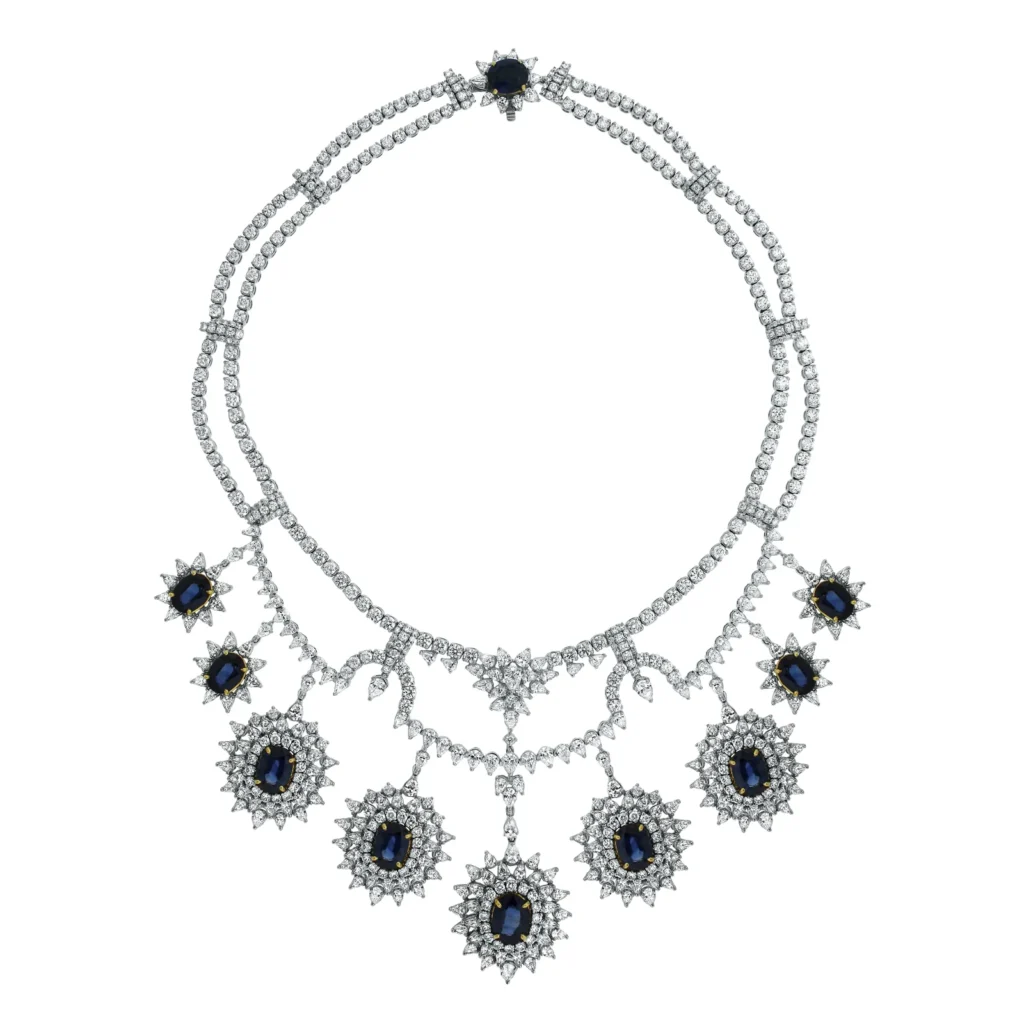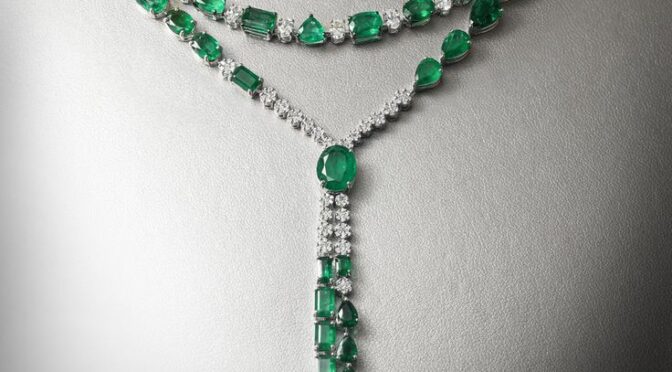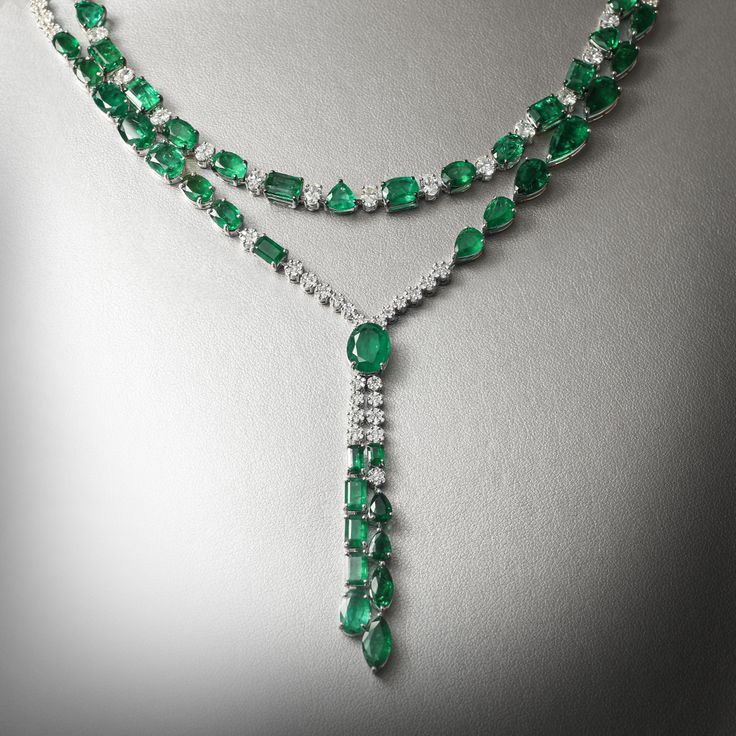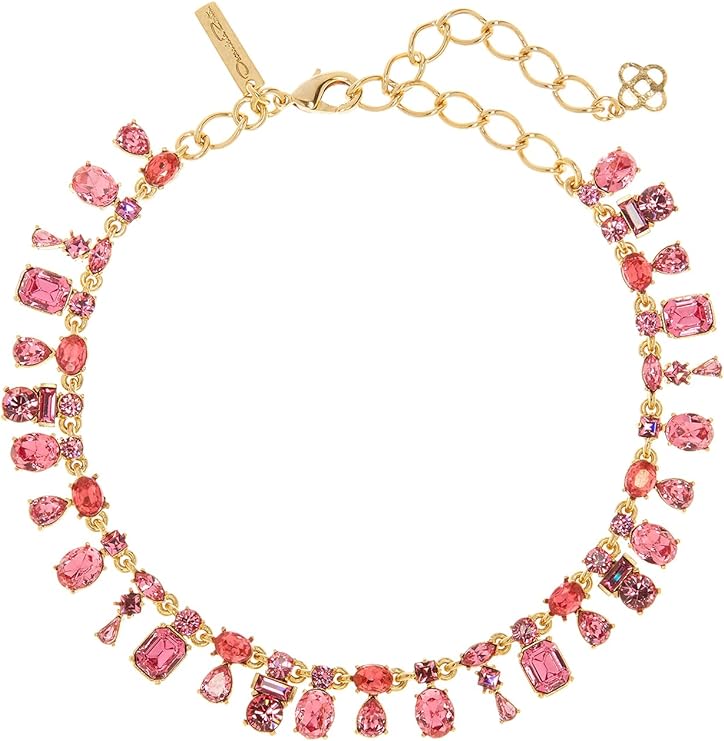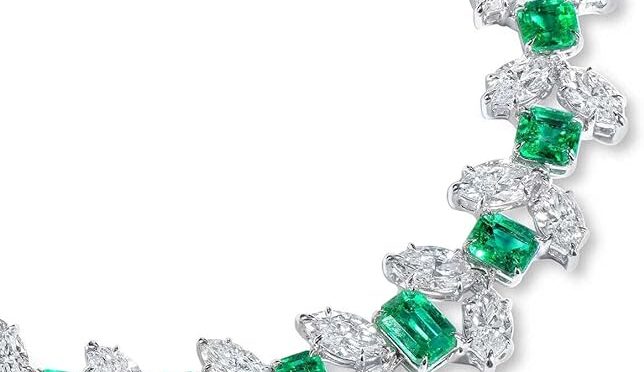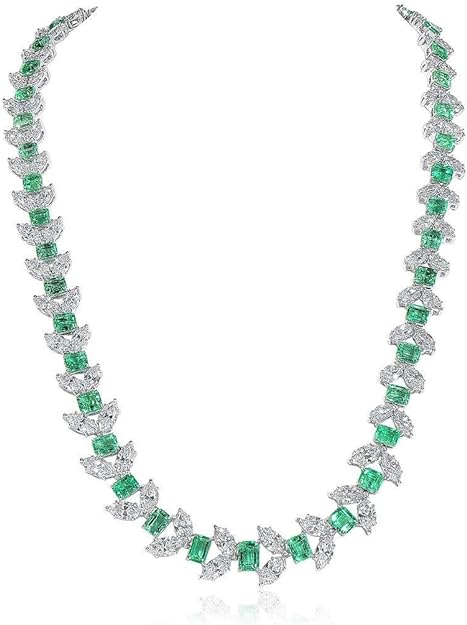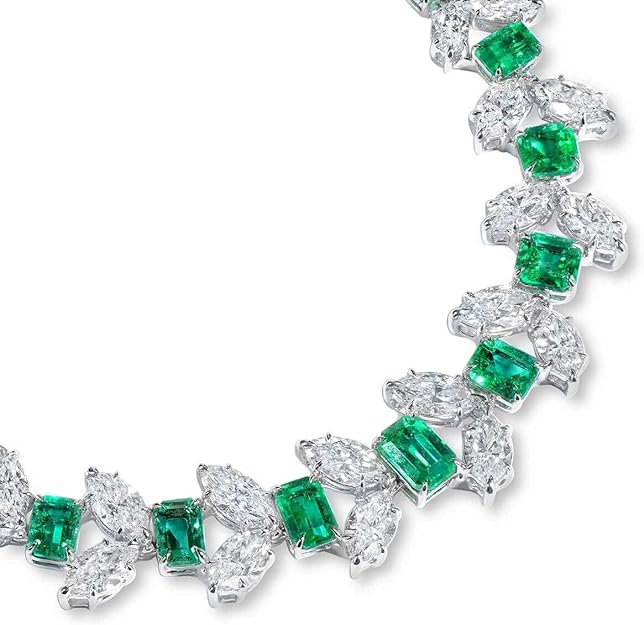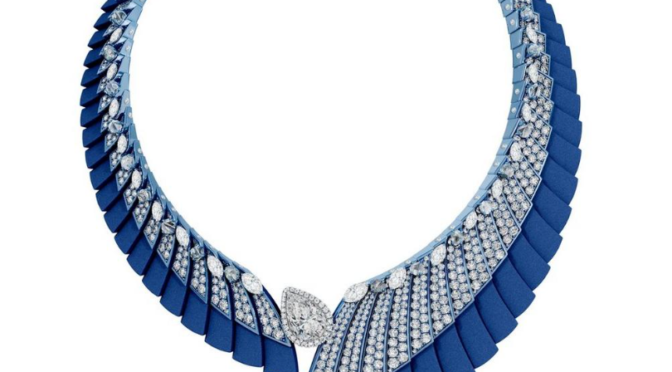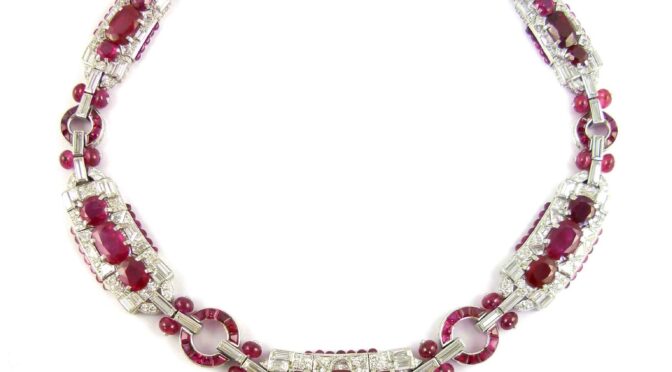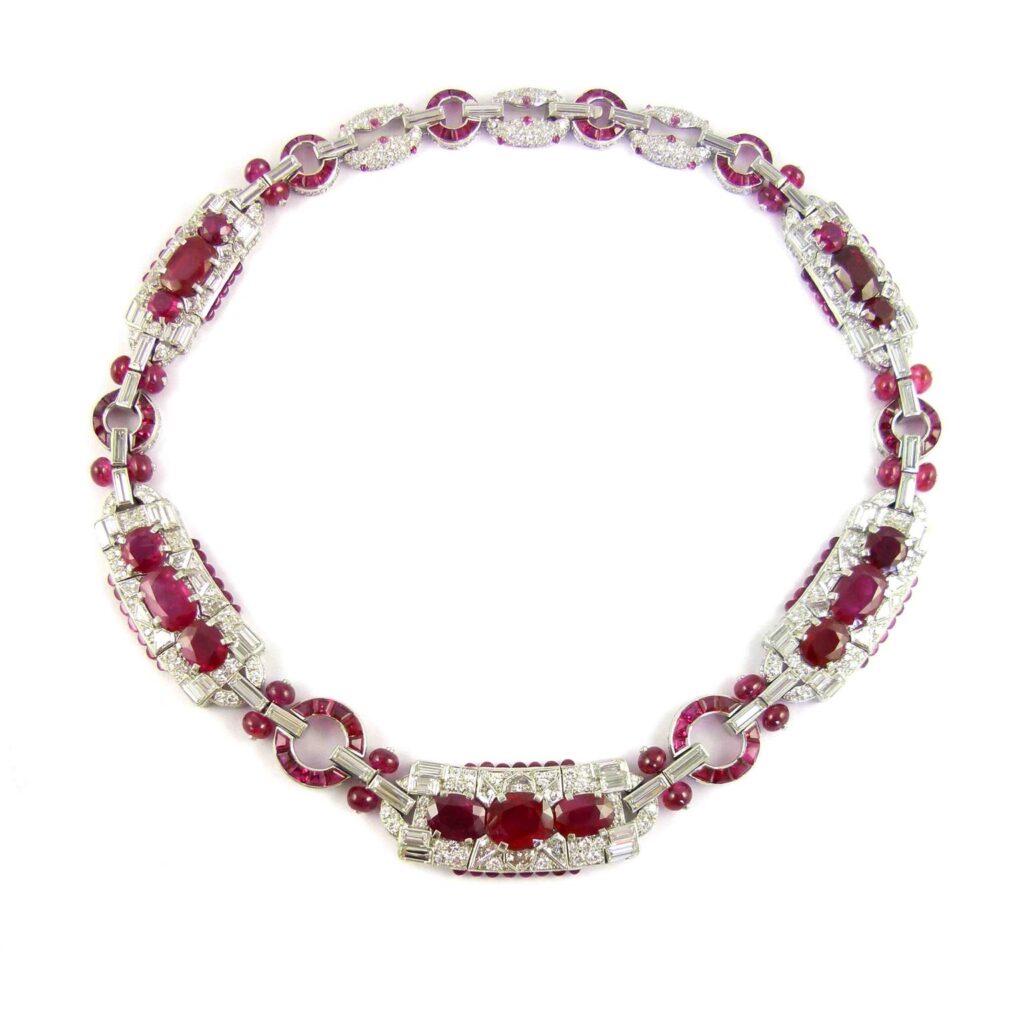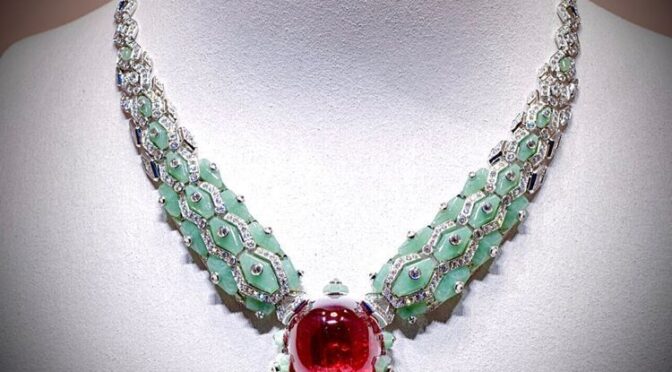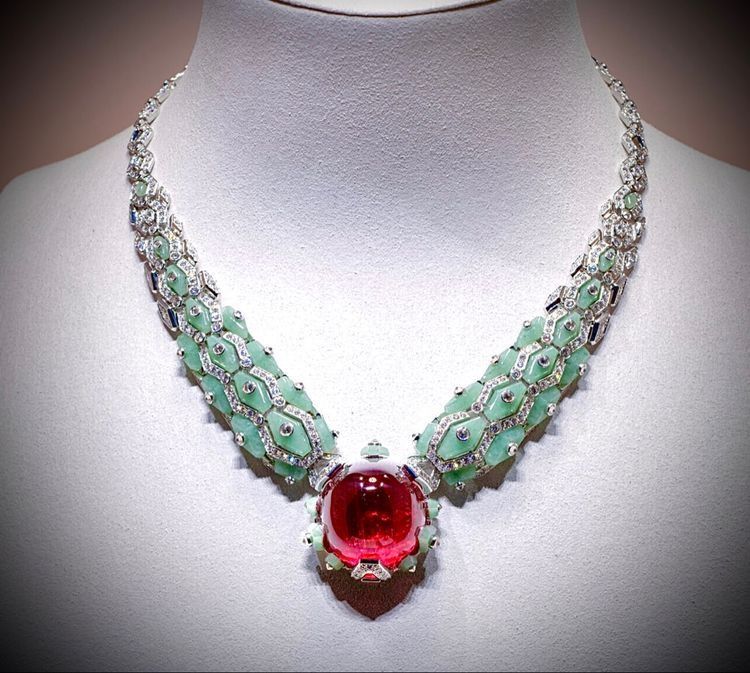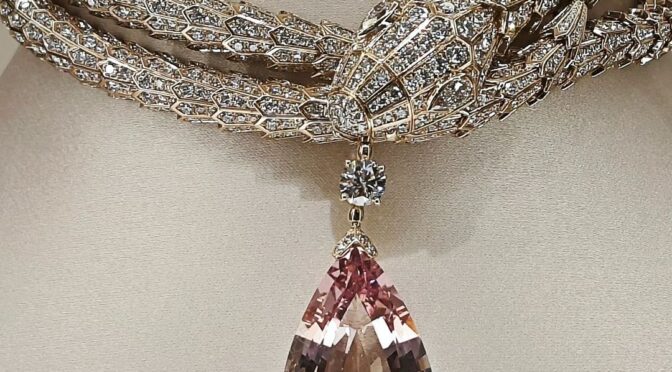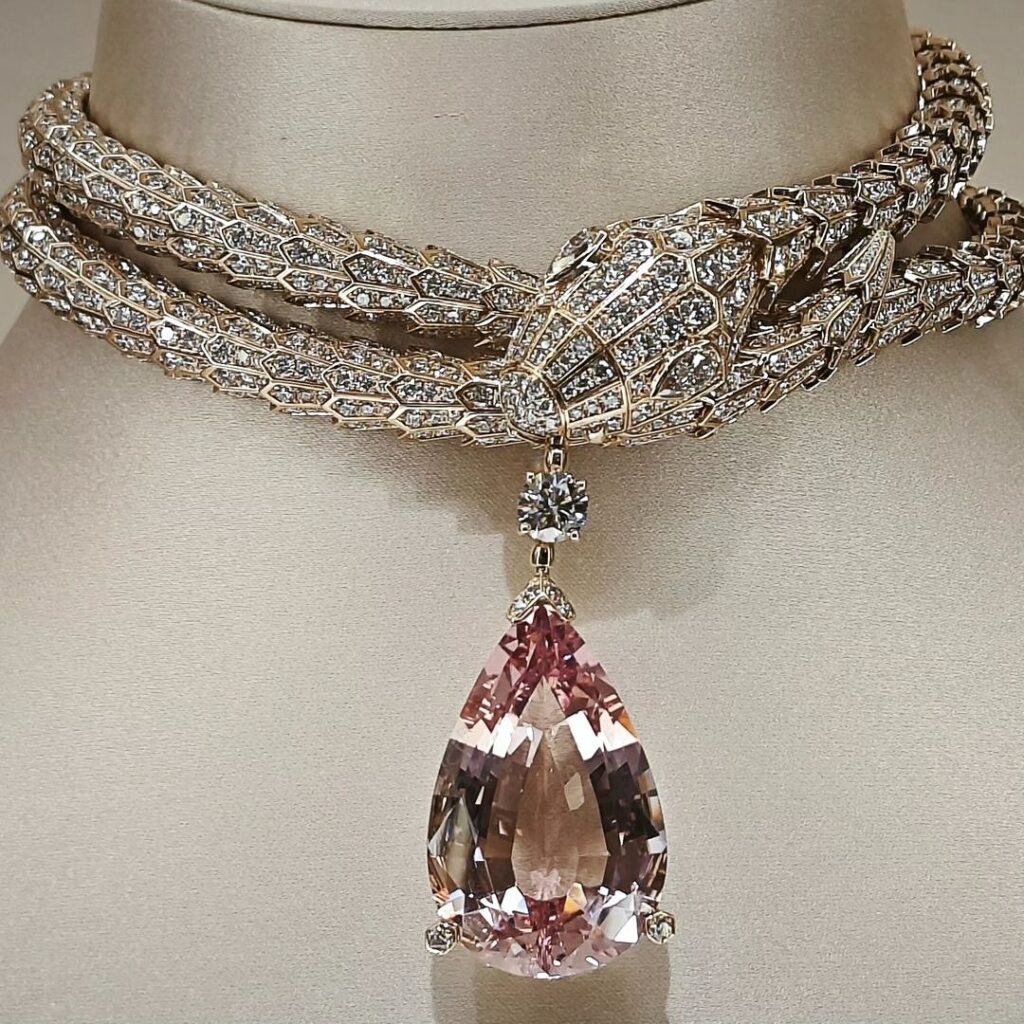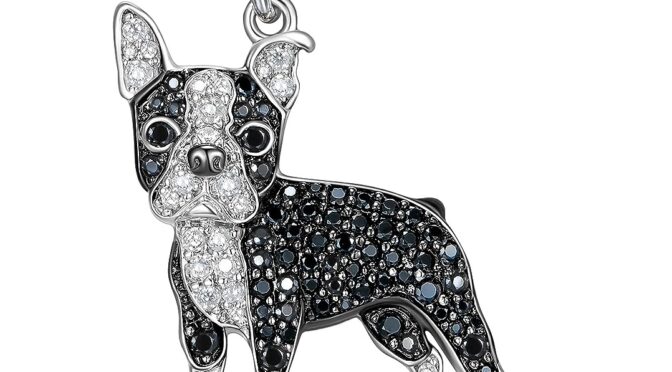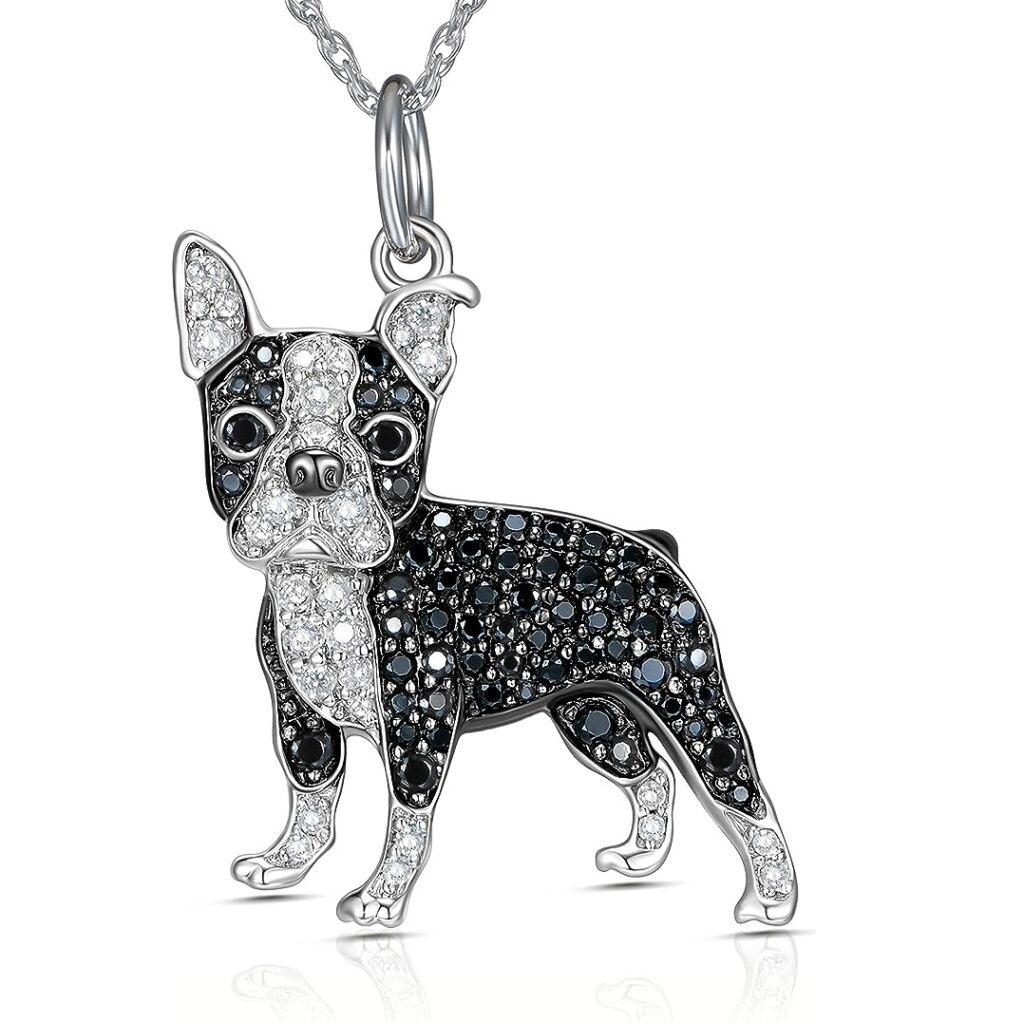Charlize Theron wears a shimmering Boucheron choker and earrings.
Tag Archives: Necklace
Atlantis Sapphire & Diamond Suite (139.11 ct Diamonds & Sapphires) in 18K White Gold
Gorgeous 18k White Gold Necklace with Mixed Cut Emeralds and Diamonds
Oscar de la Renta Candied Crystal Choker Necklace
GIA Certified 20.59 Carat 637 Green Color Emerald Set In 18k White Gold Necklace By Astteria
ASCENDING SHADOWS NECKLACE
De Beers sweeping necklace is modern and magnificent in equal measure. Dark blue aluminium steps, graduating in size, rise to meet light blue titanium set with round brilliant white diamonds. Edged in white marquise-shaped diamonds and green roughs, the focus is an exquisite 3.41 carat pear-shaped fancy light grey diamond. A stunning piece, demanding expert craftsmanship, dynamic in shape, striking in shade.





